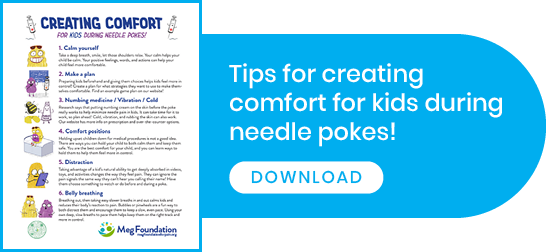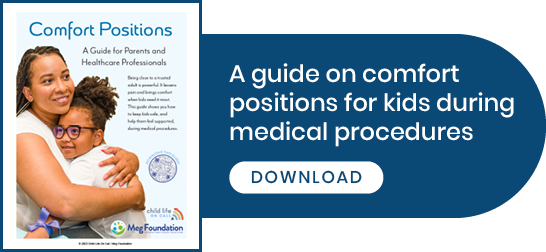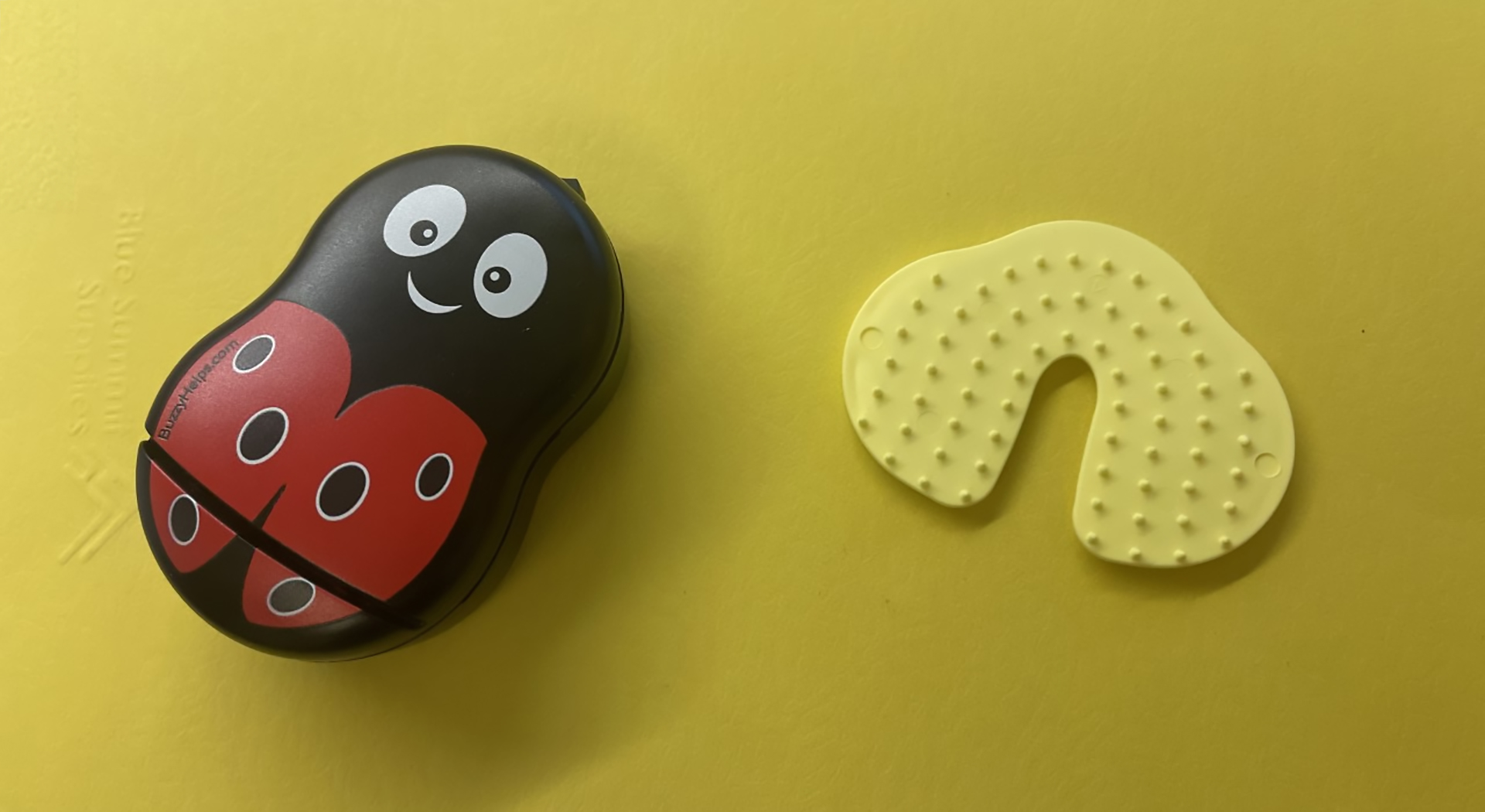Unfortunately, pain can be part of life for any child, but especially for children with complex medical conditions or severe injuries. The good news is kids don’t have to suffer through pain.
The team at Ranken Jordan Pediatric Bridge Hospital is committed to addressing pain with patients both in and out of the hospital. Child life specialists at Ranken Jordan are child development experts trained to help children of every age cope with hospitalization, procedures, and pain.
Katie Noll, a child life specialist, offers the following non-invasive, drug-free tricks and product “treats” that any parent or caregiver can use to help your child handle everything from minor boo-boos to injection pain to more chronic pain.
These tips will take the fright out of managing pain!
1. Stop the sting
Buzzy® is a handheld vibrating device that can be used as a method of pain relief and distraction for injections or painful procedures. It uses vibration to help block pain and sharp sensations on the arm. Buzzy has been shown to decrease needle pain by 50-80% and when added to distraction, it can reduce pain by 88%.
Buzzy® is based on the gate control theory of pain management. “Gate control” is the term used to describe pain relief by causing sensations other than pain. The sensations are sent down the same pathway to block pain at the “gate.”
While Ranken Jordan frequently uses Buzzy in the hospital, you can order your own to used at home or the pediatrician’s office at https://paincarelabs.com/collections/buzzy or Amazon.
ShotBlocker by Bionix was invented by a pediatrician to reduce needle pain and anxiety associations with injections. The plastic C-shaped device has small bumps on the back that distract from the pain sensation of a needle poke This innovative device instantly alleviates the pain and anxiety of needle injections. ShotBlocker is easy to use and is effective for all ages.
You can order your own for home of other doctor visits at https://bionix.com/shotblocker.html or Amazon.
2. Make them comfortable
Comfort positions are secure hugging holds that help your child feel safe and secure during medical procedures. The comfort position’s goal is to immobilize the appropriate extremity for the procedure while minimizing trauma.
Sitting upright generally makes a child feel less vulnerable and promotes a sense of control. Through comfort positioning, the caregiver participates in positive assistance rather than negative restraining. The child feels more comforted through close contact with the caregiver. In addition, using comfort positions mean fewer people are needed to complete the procedure.
Comfort positions include:
- Chest-to-chest position
- Back-to-chest position
- Side-sitting position
- Supine hold position
- Newborn/infant swaddle
- Older infant back-to-chest position
3. Helping your pumpkin cope
Child life specialists often keep distraction tricks up their sleeve to help children better cope with a procedure. They spill some of their secrets here with an age-by-age guide for distractions and other tips to make procedures less traumatic.
For infants/toddlers (0-3 years)
- Distractions: Bubbles, light-up toys, soft music, comfort item (pacifier, lovey)
- Other tips: For toddlers, perform the procedure on a stuffed animal first.
For preschoolers (3-5 years)
- Distraction: Play with a favorite toy, sing songs, watch a favorite TV show or movie
- Other tips: Give choices, use a comfort hold, offer honest, simple explanations
For school-age kids (6-11 years)
- Distraction: I-spy, watch favorite videos, uses a stress ball or fidget
- Other tips: Allow child to manipulate medical equipment, encourage questions, ask how they are feeling
For teens (12-18 years)
- Distraction: Music, conversation, VR goggles, phone, deep breathing
- Other tips: Allow the teen to be involved in their care, offer choices



